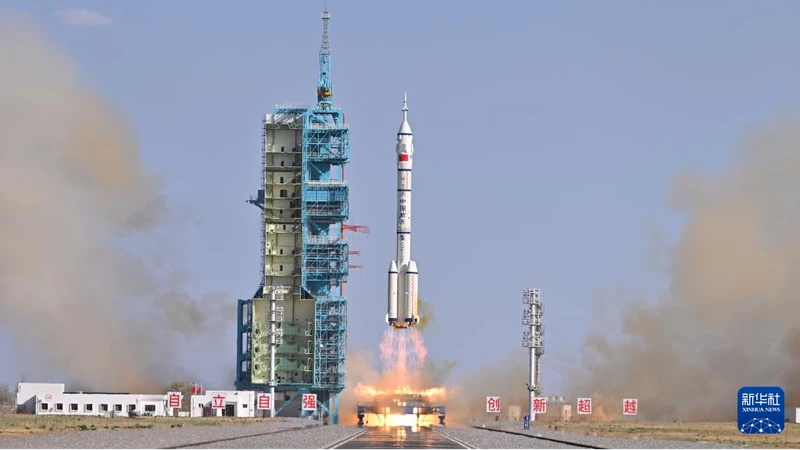The launch marks the 10th Space Day of China. The Shenzhou-20 marks the fifth crewed mission during the application and development phase of the space station and the 35th crewed mission in China’s human spaceflight programme.
The Shenzhou-20 spacecraft’s mission is to replace the crew of the Shenzhou-19 and to remain aboard the space station for about six months. During their stay, the astronauts will conduct a series of scientific and applied experiments in space and microgravity physics, spacewalking, and transporting goods in and out of the station. The crew will also install protective equipment against space dust.
Uniquely, the Shenzhou-20 spacecraft carries zebrafish, flatworms, and Gram-positive bacteria for three life science experiments aboard the space station.
About 10 minutes after liftoff, the Shenzhou-20 spacecraft successfully separated from the launch rocket and entered its predetermined orbit, marking a successful launch.
The Shenzhou-20 docked with the Tianhe core module approximately six and a half hours after entering orbit, forming a three-module, three-spacecraft complex. During their time in orbit, the crew will receive the Tianzhou-19 cargo spacecraft and the Shenzhou-21 spaceship. Its return to the Earth is scheduled for late October this year.
So far, 26 Chinese astronauts have completed 41 spaceflights. This launch marks the 571st flight of the Long March rocket and the 20th flight of the Shenzhou spacecraft.
Fifty-five years ago, China's first satellite, Dongfanghong-1, was also launched from the Jiuquan Satellite Launch Centre, an event that marked the country’s entry into space.
















